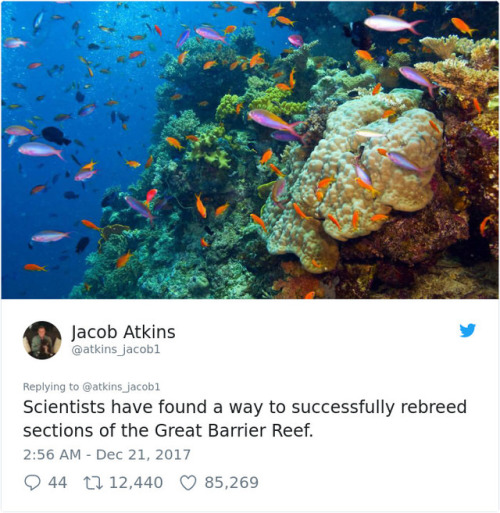Fish-Inspired Material Changes Color Using Nanocolumns

Fish-Inspired Material Changes Color Using Nanocolumns
Inspired by the flashing colors of the neon tetra fish, researchers have developed a technique for changing the color of a material by manipulating the orientation of nanostructured columns in the material.
“Neon tetras can control their brightly colored stripes by changing the angle of tiny platelets in their skin,” says Chih-Hao Chang, an associate professor of mechanical and aerospace engineering at North Carolina State University and corresponding author of a paper on the work.
“For this proof-of-concept study, we’ve created a material that demonstrates a similar ability,” says Zhiren Luo, a Ph.D. student at NC State and first author of the paper. “Specifically, we’ve shown that we can shift the material’s color by using a magnetic field to change the orientation of an array of nanocolumns.”
The color-changing material has four layers. A silicon substrate is coated with a polymer that has been embedded with iron oxide nanoparticles. The polymer incorporates a regular array of micron-wide pedestals, making the polymer layer resemble a LEGO® brick. The middle layer is an aqueous solution containing free-floating iron oxide nanoparticles. This solution is held in place by a transparent polymer cover.
Read more.
More Posts from Redplanet44 and Others
It's nap time little martian
Happy 5,000th Martian Day!
Today was Opportunity Rover’s 5,000 Martian Day! Yay! Just in case you don’t know Opportunity, here are a few little facts.
First, The opportunity Rover was launched on July 7th of 2003. It was lauched with another rover named Spirit. They landed on Mars in Janurary of 2004. Unfortunately Spirit stopped working in 2010 , but Opportunity is still alive and helping us understand Mars.
Initially Opportuinity was only supposed to be around for 90 Earth days, but instead it’s gotten tons of extensions and is still collecting data today.

Opportunity is run by a solar panel and is almost 5 feet tall. The solar panels hold enough energy for 14 hours, and the batteries help store energy for use at night. All of that helps to keep our little robot running. He currently holds the record for longest distance travelled “off-world.”
As of right now Opportunity is “hibernating” through the Martian winter and will wake up again in March (yay!) to help with more scientific discoveries.
Happy 5,000 Martian Day Opportunity! And thanks for everything you do <3

Metal Rover Model Kit
Opportunity Poster

Spikes of graphene can kill bacteria on implants
A tiny layer of graphene flakes becomes a deadly weapon and kills bacteria, stopping infections during procedures such as implant surgery
A tiny layer of graphene flakes becomes a deadly weapon and kills bacteria, stopping infections during procedures such as implant surgery. This is the findings of new research from Chalmers University of Technology, Sweden, recently published in the scientific journal Advanced Materials Interfaces.
Operations for surgical implants, such as hip and knee replacements or dental implants, have increased in recent years. However, in such procedures, there is always a risk of bacterial infection. In the worst case scenario, this can cause the implant to not attach to the skeleton, meaning it must be removed.
Bacteria travel around in fluids, such as blood, looking for a surface to cling on to. Once in place, they start to grow and propagate, forming a protective layer, known as a biofilm.
A research team at Chalmers has now shown that a layer of vertical graphene flakes forms a protective surface that makes it impossible for bacteria to attach. Instead, bacteria are sliced apart by the sharp graphene flakes and killed. Coating implants with a layer of graphene flakes can therefore help protect the patient against infection, eliminate the need for antibiotic treatment, and reduce the risk of implant rejection. The osseointegration – the process by which the bone structure grow to attach the implant – is not disturbed. In fact, the graphene has been shown to benefit the bone cells.
Read more.
PINning down future problems

Study finds hackers could use brainwaves to steal passwords
Researchers at the University of Alabama at Birmingham suggest that brainwave-sensing headsets, also known as EEG or electroencephalograph headsets, need better security after a study reveals hackers could guess a user’s passwords by monitoring their brainwaves.
EEG headsets are advertised as allowing users to use only their brains to control robotic toys and video games specifically developed to be played with an EEG headset. There are only a handful on the market, and they range in price from $150 to $800.
Nitesh Saxena, Ph.D., associate professor in the UAB College of Arts and Sciences Department of Computer and Information Sciences, and Ph.D. student Ajaya Neupane and former master’s student Md Lutfor Rahman, found that a person who paused a video game and logged into a bank account while wearing an EEG headset was at risk for having their passwords or other sensitive data stolen by a malicious software program.
“These emerging devices open immense opportunities for everyday users,” Saxena said. “However, they could also raise significant security and privacy threats as companies work to develop even more advanced brain-computer interface technology.”
Saxena and his team used one EEG headset currently available to consumers online and one clinical-grade headset used for scientific research to demonstrate how easily a malicious software program could passively eavesdrop on a user’s brainwaves. While typing, a user’s inputs correspond with their visual processing, as well as hand, eye and head muscle movements. All these movements are captured by EEG headsets. The team asked 12 people to type a series of randomly generated PINs and passwords into a text box as if they were logging into an online account while wearing an EEG headset, in order for the software to train itself on the user’s typing and the corresponding brainwave.
“In a real-world attack, a hacker could facilitate the training step required for the malicious program to be most accurate, by requesting that the user enter a predefined set of numbers in order to restart the game after pausing it to take a break, similar to the way CAPTCHA is used to verify users when logging onto websites,” Saxena said.
The team found that, after a user entered 200 characters, algorithms within the malicious software program could make educated guesses about new characters the user entered by monitoring the EEG data recorded. The algorithm was able to shorten the odds of a hacker’s guessing a four-digit numerical PIN from one in 10,000 to one in 20 and increased the chance of guessing a six-letter password from about 500,000 to roughly one in 500.
EEG has been used in the medical field for more than half a century as a noninvasive method for recording electrical activity in the brain. Electrodes are placed on the surface of the scalp to detect brain waves. An EEG machine then amplifies the signals and records them in a wave pattern on graph paper or a computer. EEG can be combined with a brain-computer interface to allow a person to control external devices. This technology was once highly expensive and used mostly for scientific research, like the production of neuroprosthetic applications to help disabled patients control prosthetic limbs by thinking about the movements. However, it is now being marketed to consumers in the form of a wireless headset and is becoming popular in the gaming and entertainment industries.
“Given the growing popularity of EEG headsets and the variety of ways in which they could be used, it is inevitable that they will become part of our daily lives, including while using other devices,” Saxena said. “It is important to analyze the potential security and privacy risks associated with this emerging technology to raise users’ awareness of the risks and develop viable solutions to malicious attacks.”
One potential solution proposed by Saxena and his team is the insertion of noise anytime a user types a password or PIN while wearing an EEG headset.





Rocket into sub-orbit on Blue Origin’s New Shepard! (December 15, 2017) It’s a pristine day in west Texas. The desert stretches far to the horizon out the capsule’s windows with the foothills of the Van Horn mountain range in the distance. The typical winter day is broken first by a deep rumble from below followed an instant later by clouds of smoke and a flash of flame. That’s the scene inside Blue Origin’s New Shepard crew capsule during launch as seen in new footage from this week’s test. Mannequin Skywalker - the company’s astronaut simulator - is seen rocketing to over 322,000 feet, or 61 miles, strapped in one of the cabin’s six seats.

Within seconds, the receding countryside below gives way to vast swaths of desert. The sky turns from thick and blue to pitch black in a matter of seconds as the vehicle races upwards. New Shepard would reach a maximum ascent velocity of Mach 2.94 during the flight. As the single BE-3 engine of the propulsion stage cuts out, the cabin becomes weightless as indicated by straps on the dummy’s chest. Hundreds of miles of the Earth below spread out in all directions from the cabin’s six panoramic windows. Measuring 2.4 by 3.6 feet, they’re the largest ever flown on a space vehicle. Weightless conditions and breathtaking views continue as the capsule begins its descent to Earth. It’s like the launch but in reverse; the black of space quickly fills with colour as the atmosphere is reentered. Because New Shepard is a suborbital vehicle and doesn’t boost the capsule fast enough to achieve significant atmospheric friction, there is no flaming meteor-in-the-sky or heat shield on the spacecraft. It simply falls through the sky, racing to meet the Earth below which it only just left. Back in the thicker atmosphere, three drogue parachutes help stabilize the cabin before the larger main canopies are unfurled. These help bring the capsule to a safe, soft landing at just one foot per second a few kilometers from the launch pad. According to Blue Origin’s founder and CEO, Jeff Bezos, the pinging heard inside the capsule in the video was due to one of the 12 experiments carried on board Mission 7. This was the first New Shepard flight granted a commercial launch license by the FAA, allowing them to carry commercial research payloads on the flight. Other flight milestones can also be discerned by the subtle audio and visual clues, such as MECO, stage separation, drogue cute deployment and mail parachute deployment. Read our full story on Mission 7 and the resumption of New Shepard testing by clicking here.
Check out the full video with audio by clicking here or below.
P/C: Blue Origin.









Good News of 2017
CRISP(ie)R news than anything!

A powerful technique for editing genomes is now more precise. By tweaking an enzyme, researchers have reduced the error rate for the technique, known as CRISPR–Cas9 — in some cases to undetectable levels, they report on 6 January in Nature1.
Researchers use CRISPR–Cas9 to make precise changes to genomes that remove or edit a faulty gene. It has worked on nearly every creature on which they have tested it, including human embryos.
The technique relies on an enzyme called Cas9, that uses a ‘guide RNA’ molecule to home in on its target DNA. Cas9 cuts the DNA at that site, and the cell’s natural DNA repair machinery then takes over to mend the cut — deleting a short fragment of DNA or stitching in a new sequence in the process.
But the technology is not infallible: sometimes the Cas9 enzyme creates unwanted mutations. As CRISPR inches out of the laboratory and towards the clinic — with debates raging overwhether it should be deployed in embryos — researchers have pushed to reduce the error rate.
The latest study moves the field closer to that goal, says lead author Keith Joung, a pathologist at Massachusetts General Hospital in Boston. “This is a significant move forward,” he says. “We can very much reduce the probability of off-targets.”
Continue Reading.
A battery that eats CO2

By Khai Trung Le
A new type of battery developed by researchers at MIT could be made partly from carbon dioxide captured from power plants. Rather than attempting to convert carbon dioxide to specialized chemicals using metal catalysts, which is currently highly challenging, this battery could continuously convert carbon dioxide into a solid mineral carbonate as it discharges.
The battery is made from lithium metal, carbon, and an electrolyte that the researchers designed. While still based on early-stage research and far from commercial deployment, the new battery formulation could open up new avenues for tailoring electrochemical carbon dioxide conversion reactions, which may ultimately help reduce the emission of the greenhouse gas to the atmosphere.
Currently, power plants equipped with carbon capture systems generally use up to 30 percent of the electricity they generate just to power the capture, release, and storage of carbon dioxide. Anything that can reduce the cost of that capture process, or that can result in an end product that has value, could significantly change the economics of such systems, the researchers say.
Betar Gallant, Assistant Professor of Mechanical Engineering at MIT, said, ‘Carbon dioxide is not very reactive. Trying to find new reaction pathways is important.’Ideally, the gas would undergo reactions that produce something worthwhile, such as a useful chemical or a fuel. However, efforts at electrochemical conversion, usually conducted in water, remain hindered by high energy inputs and poor selectivity of the chemicals produced.
The team looked into whether carbon-dioxide-capture chemistry could be put to use to make carbon-dioxide-loaded electrolytes — one of the three essential parts of a battery — where the captured gas could then be used during the discharge of the battery to provide a power output.
The team developed a new approach that could potentially be used right in the power plant waste stream to make material for one of the main components of a battery. By incorporating the gas in a liquid state, however, Gallant and her co-workers found a way to achieve electrochemical carbon dioxide conversion using only a carbon electrode. The key is to preactivate the carbon dioxide by incorporating it into an amine solution.
‘What we’ve shown for the first time is that this technique activates the carbon dioxide for more facile electrochemistry,’ Gallant says. ‘These two chemistries — aqueous amines and nonaqueous battery electrolytes — are not normally used together, but we found that their combination imparts new and interesting behaviors that can increase the discharge voltage and allow for sustained conversion of carbon dioxide.’
The battery is made from lithium metal, carbon, and an electrolyte that the researchers designed. While still based on early-stage research and far from commercial deployment, the new battery formulation could open up new avenues for tailoring electrochemical carbon dioxide conversion reactions, which may ultimately help reduce the emission of the greenhouse gas to the atmosphere.
-My sun and stars!
-Moon of my life!
5 things that may surprise you about the Moon
…In honor of International Observe the Moon Night
October 28th is International Observe the Moon Night, a worldwide, public celebration of lunar science and exploration held annually since 2010 thanks to our Lunar Reconnaissance Orbiter (LRO) mission team and partners. One day each year, everyone on Earth is invited to observe and learn about the Moon together, and to celebrate the cultural and personal connections we all have with our planet’s nearest neighbor.

Here are 5 things that might surprise you about the Moon.
1. There has been a spacecraft there for 100 lunar days

In October 2017, LRO celebrates one hundred days of collecting scientific data at the Moon. One hundred Moon days. From our perspective on Earth, one lunar day is one full phase cycle, or about 29.5 Earth days. That’s 100 opportunities to observe changes from night to day, photograph the surface at different Sun angles, measure rising and falling temperatures, study the way certain chemicals react to the daily light and temperature cycle, and increase our understanding of the Moon as a dynamic place.
2. You can still see the paths left by Apollo astronauts’ boot prints and rovers

Much of the lunar surface is covered in very fine dust. When Apollo astronauts landed on the Moon, the descent stage engine disturbed the dust and produced a distinct bright halo around the lunar module. As astronauts moved around, their tracks exposed the darker soil underneath, creating distinct trails that we know, thanks to LRO, are still visible today. The Moon has no atmosphere, so there is no wind to wipe away these tracks.
3. The Moon has tattoos!

Observations from LRO show mysterious patterns of light and dark that are unique to the Moon. These lunar swirls look painted on, like the Moon got ‘inked.’ Lunar swirls, like these imaged at Reiner Gamma by LRO, are found at more than 100 locations across the lunar surface. Lunar swirls can be tens of miles across and appear in groups or as isolated features.
Researchers think these patterns form in places where there’s still a remnant of the Moon’s magnetic field. There are still many competing theories about how swirls form, but the primary idea is that the local magnetic field deflects the energetic particles in the solar wind, so there’s not as much weathering of the surface. The magnetically shielded areas would then look brighter than everything around them.
4. There were once active volcanoes, that shaped what we see now

Early astronomers named the large dark spots that we see on the near side of the Moon “maria,” Latin for “seas,” because that’s what they thought they were. We now know that the dark spots are cooled lava, called basalt, formed from ancient volcanic eruptions. The Moon’s volcanoes are no longer active, but their past shapes the Moon that we see today. The Moon doesn’t have large volcanoes like ones in Hawaii, but it does have smaller cones and domes.
Other small features derived from volcanic activity include rivers of dried lava flows, like the ones visible in this image of Vallis Schroteri taken by LRO, and dark areas formed from eruptive volcanoes that spewed fire. For many years, scientists thought the Moon’s volcanic activity died out long ago, but there’s some evidence for relatively “young” volcanism, suggesting that the activity gradually slowed down instead of stopping abruptly.
5. Anyone, anywhere can participate in International Observe the Moon Night.

How to celebrate International Observe the Moon Night
Attend an event – See where events are happening near you by visiting http://observethemoonnight.org
Host an event – Call up your neighbors and friends and head outdoors – no special equipment is needed. Let us know how you celebrated by registering your event!
Don’t let cloudy weather get you down! Observe the Moon in a variety of ways from the comfort of indoors – View stunning lunar vistas through images and videos, or explore the Moon on your own with QuickMap or Moon Trek
Join the worldwide conversation with #ObserveTheMoon on Twitter, Instagram and Facebook
For regular Moon-related facts, updates and science, follow @NASAMoon on Twitter
Make sure to follow us on Tumblr for your regular dose of space: http://nasa.tumblr.com.
Sound metal, don't you think?

Engineers 3-D print high-strength aluminum, solve ages-old welding problem using nanoparticles
HRL Laboratories has made a breakthrough in metallurgy with the announcement that researchers at the famous facility have developed a technique for successfully 3D printing high-strength aluminum alloys—including types Al7075 and Al6061—that opens the door to additive manufacturing of engineering-relevant alloys. These alloys are very desirable for aircraft and automobile parts and have been among thousands that were not amenable to additive manufacturing—3D printing—a difficulty that has been solved by the HRL researchers. An added benefit is that their method can be applied to additional alloy families such as high-strength steels and nickel-based superalloys difficult to process currently in additive manufacturing.
“We’re using a 70-year-old nucleation theory to solve a 100-year-old problem with a 21st century machine,” said Hunter Martin, who co-led the team with Brennan Yahata. Both are engineers in the HRL’s Sensors and Materials Laboratory and PhD students at University of California, Santa Barbara studying with Professor Tresa Pollock, a co-author on the study. Their paper 3D printing of high-strength aluminum alloys was published in the September 21, 2017 issue of Nature.
Additive manufacturing of metals typically begins with alloy powders that are applied in thin layers and heated with a laser or other direct heat source to melt and solidify the layers. Normally, if high-strength unweldable aluminum alloys such as Al7075 or AL6061 are used, the resulting parts suffer severe hot cracking—a condition that renders a metal part able to be pulled apart like a flaky biscuit.
Read more.
“You are not worthless. Organs are extremely valuable on the black market.”
— Kyrian Hunter to Nick (via incorrectdarkhunterqotes)
-
 dexmathylphenidate reblogged this · 6 years ago
dexmathylphenidate reblogged this · 6 years ago -
 waitingtillwinter reblogged this · 6 years ago
waitingtillwinter reblogged this · 6 years ago -
 jinglebellsblog liked this · 6 years ago
jinglebellsblog liked this · 6 years ago -
 neapolitanswirl liked this · 6 years ago
neapolitanswirl liked this · 6 years ago -
 godzillax1 liked this · 6 years ago
godzillax1 liked this · 6 years ago -
 thestarsaretooprettytosleep liked this · 6 years ago
thestarsaretooprettytosleep liked this · 6 years ago -
 lesless liked this · 6 years ago
lesless liked this · 6 years ago -
 kalifissure liked this · 6 years ago
kalifissure liked this · 6 years ago -
 light-the-pyre reblogged this · 6 years ago
light-the-pyre reblogged this · 6 years ago -
 nanobilliard liked this · 6 years ago
nanobilliard liked this · 6 years ago -
 sciencenerd4-blog liked this · 6 years ago
sciencenerd4-blog liked this · 6 years ago -
 justmetoo2-blog liked this · 6 years ago
justmetoo2-blog liked this · 6 years ago -
 ask-de-writer liked this · 6 years ago
ask-de-writer liked this · 6 years ago -
 mistertotality liked this · 6 years ago
mistertotality liked this · 6 years ago -
 quantum-questions liked this · 6 years ago
quantum-questions liked this · 6 years ago -
 merryweathers29-blog liked this · 6 years ago
merryweathers29-blog liked this · 6 years ago -
 alittleworldlywise liked this · 6 years ago
alittleworldlywise liked this · 6 years ago -
 fetmaster liked this · 6 years ago
fetmaster liked this · 6 years ago -
 theobserver00 liked this · 6 years ago
theobserver00 liked this · 6 years ago -
 redhousehead reblogged this · 6 years ago
redhousehead reblogged this · 6 years ago -
 redhousehead liked this · 6 years ago
redhousehead liked this · 6 years ago -
 tiltingatwindmills90 reblogged this · 6 years ago
tiltingatwindmills90 reblogged this · 6 years ago -
 tiltingatwindmills90 liked this · 6 years ago
tiltingatwindmills90 liked this · 6 years ago -
 intelligentliving reblogged this · 6 years ago
intelligentliving reblogged this · 6 years ago -
 llort liked this · 6 years ago
llort liked this · 6 years ago -
 redraidervalhalla liked this · 6 years ago
redraidervalhalla liked this · 6 years ago -
 lizardking90 liked this · 6 years ago
lizardking90 liked this · 6 years ago -
 phos-studies reblogged this · 6 years ago
phos-studies reblogged this · 6 years ago -
 iaresancho reblogged this · 6 years ago
iaresancho reblogged this · 6 years ago -
 iaresancho liked this · 6 years ago
iaresancho liked this · 6 years ago -
 crashleyashley reblogged this · 6 years ago
crashleyashley reblogged this · 6 years ago -
 lifefeignsinnocence liked this · 6 years ago
lifefeignsinnocence liked this · 6 years ago -
 blog-dzepxich liked this · 6 years ago
blog-dzepxich liked this · 6 years ago -
 rukasudark liked this · 6 years ago
rukasudark liked this · 6 years ago -
 fullcuntact liked this · 6 years ago
fullcuntact liked this · 6 years ago -
 aninsidefreak liked this · 6 years ago
aninsidefreak liked this · 6 years ago -
 regicide1997 liked this · 6 years ago
regicide1997 liked this · 6 years ago -
 lookatthemann liked this · 6 years ago
lookatthemann liked this · 6 years ago -
 neuroscientifical-cache reblogged this · 6 years ago
neuroscientifical-cache reblogged this · 6 years ago -
 redplanet44 reblogged this · 6 years ago
redplanet44 reblogged this · 6 years ago -
 waterygrave-gravecrawler-go reblogged this · 6 years ago
waterygrave-gravecrawler-go reblogged this · 6 years ago -
 as-if-and-only-if reblogged this · 6 years ago
as-if-and-only-if reblogged this · 6 years ago -
 materialsscienceandengineering reblogged this · 6 years ago
materialsscienceandengineering reblogged this · 6 years ago